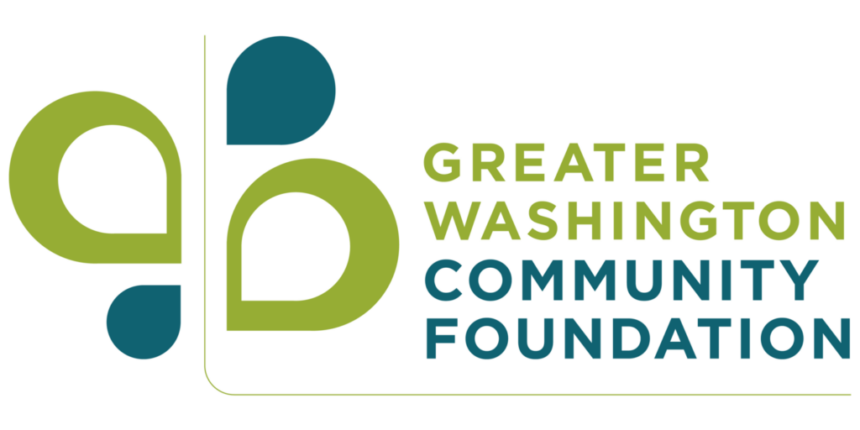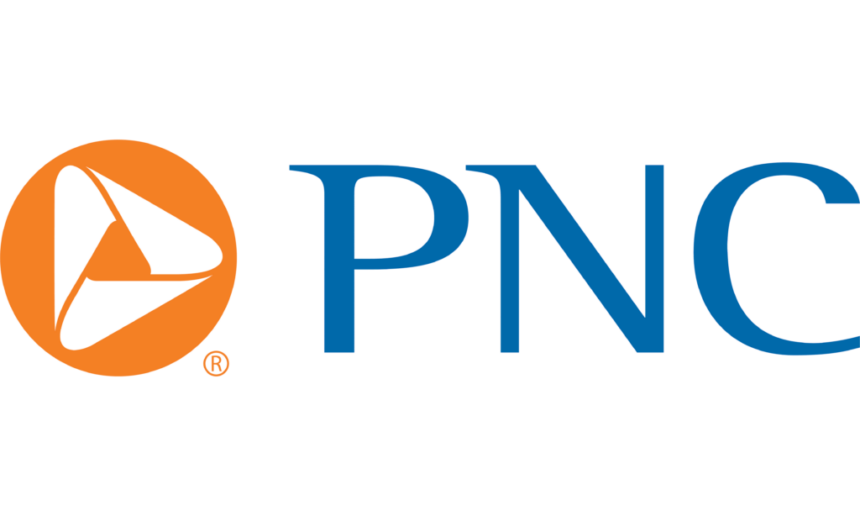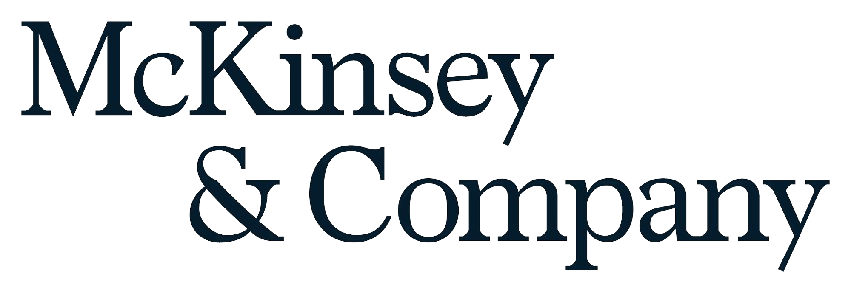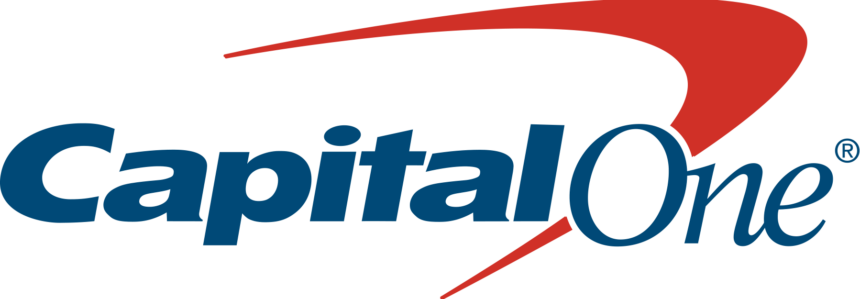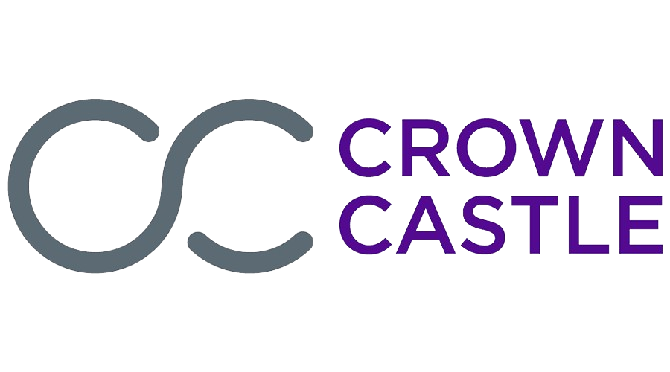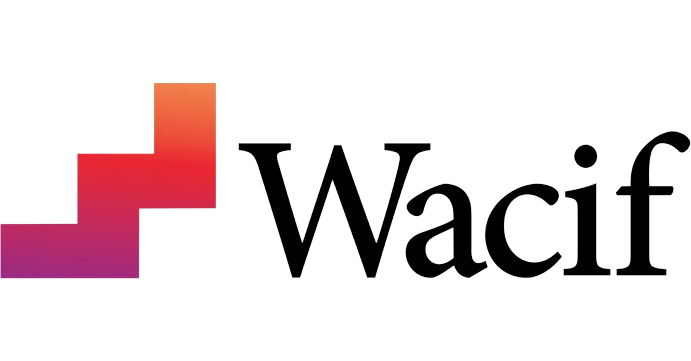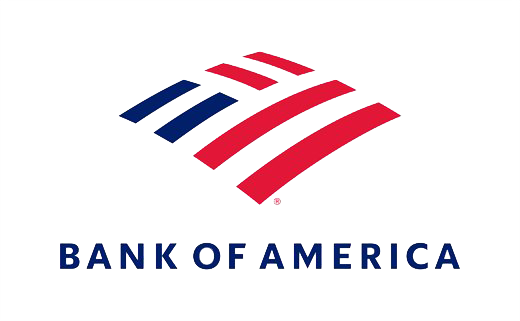The Shutdown is Finally Over. How Can We Build Resilience?
The federal government is finally resuming normal operations after a jaw-dropping 35 days of political gridlock and dysfunction. We cannot yet quantify the full extent of the economic and psychological damage caused by the shutdown, but we know that it’s big, especially in Greater Washington. (For examples of how area companies and workers have been impacted, read our press release.)
Shutting down parts of the federal government is a bad policy-making tool, yet it’s a reality in Washington that happens occasionally. The key to building resilience for the regional economy is diversification, meaning we need more economic growth in new sectors. Diversification can also help solve longstanding development challenges and make Greater Washington more globally competitive and a better place for everyone to live and work.
The Consequences of Lopsided Prosperity
Greater Washington is prosperous. At $530 billion, it has the fifth largest gross domestic product (GDP) of all metropolitan regions in the United States.
The problem is that nearly two thirds of the region’s GDP is generated by the government, professional services, finance, and real estate. Every other business activity combined–from manufacturing to hospitality to retail–makes up only one third of our economy.
Overdependence on a few sectors has a negative impact on our growth. According to Brookings, the region ranked only 76 out of the top 100 metropolitan regions in economic growth between 2011 and 2016. The Metropolitan Washington Council of Governments expects that job growth will outpace the national average over the next 30 years, which is good news, but we believe that the 1.1 million new jobs they anticipate still falls short of the region’s potential and need.
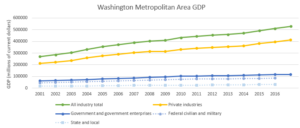
Growth in government spending has grown at the same pace as private sector growth in the Washington Metropolitan Area since 2001. (Source: Bureau of Economic Analysis, 2017)
Slow and lopsided economic growth limits the funds that can be invested in new infrastructure, amenities, and services, which in turn prevents the region from reaching its full potential as a world-class metropolitan area.
Three Ways to Encourage Economic Diversification
Fortunately, we are seeing momentum, especially in the technology sector. Micron and Amazon announced last year that they will make multi-billion-dollar investments in the region, while Virginia Tech unveiled plans for its Innovation Campus in Alexandria, Virginia.
This is a good sign, but we must resist the urge to get comfortable. There are important actions that we must take to encourage further growth in technology and other sectors.
First, Greater Washington must be highly livable, meaning it cannot be an insurmountable challenge for workers to enjoy a good quality of life. Second, our economy must be inclusive, with jobs for people of different socioeconomic and educational backgrounds. This would give more people a chance to make a good living while expanding our workforce pipeline.
There are many ways to achieve greater livability and inclusivity, but here are three tactics that we are thinking about:
- Get smart with digital infrastructure. As our region gets bigger, our infrastructure, amenities, and natural resources become strained. Innovative, smart city technology can help us operate more efficiently. For residents, this can result in a wide range of benefits including shorter commutes, faster response times from police, cleaner air, or better housing. Cities at the forefront of this trend are likely to be better places to live relative to cities that fail to take advantage of what digital infrastructure has to offer.
- Increase variety of workforce development programs. A recent study by LinkedIn found that Greater Washington has an overabundance of trained workers in fields like politics, economics, communications, and law, but a scarcity of trained workers in other fields, such as healthcare, retail, and manufacturing. This indicates that there is room for improvement in how our training and education programs prepare local workers for the jobs available here. Closing this skills gap will help more people increase their personal prosperity and grow industries that are struggling to fill open positions.
- Develop housing and transportation options that benefit all our citizens. For area residents who can’t afford a car, their employment options are limited to where they can get to with public transit. In Greater Washington, that can cut down someone’s options by as much as 92% if the goal is to maintain a commute of 45 minutes or less. Improved public transportation can connect more workers to the jobs that need them. Meanwhile, workers should be able to afford housing near where they work, and this would take pressure off our transportation systems.
Greater Washington’s lopsided economy is a liability, but common-sense solutions focused on making the region more livable and inclusive can lead to a healthier mix of prosperous industries. Real change will take time, but we can start by thinking outside the government box.
Become a member today
We need your voice at the table to make Greater Washington a place where everyone can succeed



